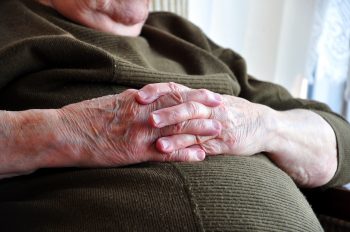
Researchers have recently found that a wearable sensor can monitor the levels of metabolites and nutrients present in a person’s blood by analyzing sweat. Previous wearable technologies that analyze sweat have only been able to assess compounds that are present in high concentrations, like glucose, lactate, and electrolytes, however, this technology has the sensitivity to pick up on sweat compounds in much lower concentrations. In addition, this device is easier to produce than comparable sensors as well, promoting mass producibility. This work was led by Wei Gao, assistant professor of medical engineering at California Institute of Technology, and was published in Nature Biotechnology.
Wearable technologies such as Gao’s sensor allow physicians to continuously monitor their patients with illnesses such as diabetes, cardiovascular disease, and kidney disease, being that these conditions all result in abnormal nutrient/metabolite levels in the bloodstream. Not only do these devices provide the physician with more detailed information to reference in treating patients, but it circumvents painful and invasive procedures involving hypodermic needles as well.
“Such wearable sweat sensors have the potential to rapidly, continuously, and noninvasively capture changes in health at molecular levels,” explained Gao. “They could enable personalized monitoring, early diagnosis, and timely intervention.”
Gao’s wearable device utilizes microfluidics to obtain these readings from small samples of fluid. This technique refers to technologies that manipulate small quantities of fluid by passing them through channels that are typically less than a quarter of a millimeter across. Microfluidic technology is needed for this type of technology to minimize the effect of sweat evaporation and skin contamination on the sensor’s accuracy.
Gao and colleagues claim that until now, wearable sensors that utilize microfluidics were mostly made using lithography-evaporation, which involves complicated and expensive fabrication processes. Instead of taking this approach, the research team made their biosensors out of graphene, a strong, flexible, conductive sheet of carbon that has a thickness of one carbon atom. The graphene-based sensors and the microfluidics channels are both created by engraving the plastic sheets with a carbon dioxide laser.
The researchers decided to have their sensor measure respiratory and heart rates, and levels of uric acid and tyrosine in the sweat. The latter was selected because tyrosine is a strong indicator of metabolic disorder, liver disease, eating disorders, and neuropsychiatric conditions. Uric acid is an important indicator because, in elevated concentrations, it can indicate gout formation. Characterized by inflammation and irritation, gout is a painful joint disease that results from the crystallization of uric acid in the joints, typically in the feet.
To evaluate the sensors, the team ran several tests with healthy participants to measure sweat tyrosine levels. They did so by assessing the physical fitness of participants in both a group of trained athletes and another comprised of participants with average fitness. The sensors displayed lower tyrosine levels in the sweat of athletes, which was consistent with the researchers’ expectations.
To analyze uric acid levels, the team took a sample of healthy individuals and monitored their sweat while they were fasting and after they consumed a meal with high purine concentration, being that these compounds in food are metabolized into uric acid. The sensor adequately displayed the expected rise in uric acid levels after the consumption of these foods. A similar test including patients diagnosed with gout showed that they had elevated levels of uric acid in their sweat as well. Gao and colleagues also found that the sensor’s accuracy was on par with that of blood sample tests as well.
“Considering that abnormal circulating nutrients and metabolites are related to a number of health conditions, the information collected from such wearable sensors will be invaluable for both research and medical treatment,” Gao concluded.
Read the full published study here for detailed results.
A wearable sensor that can monitor levels of metabolites and nutrients in a person’s blood by analyzing their sweat. #HealthTech #Wearables #PrecisionMedicine https://t.co/C9eu3a4ZH0
— Global Gene Corp (@GlobalGeneCorp) November 26, 2019







 © 2025 Mashup Media, LLC, a Formedics Property. All Rights Reserved.
© 2025 Mashup Media, LLC, a Formedics Property. All Rights Reserved.